Few designers have done more with less than Milwaukee industrial designer Brooks Stevens; Dick Teague of American Motors was the only guy in the same league as far as I am concerned. As Studebaker automotive production crawled to a stop in South Bend, Stevens revamped their aging lineup of Larks and Hawks for one last go-round. A clip here and a line there was all it took to bestow them with surprising modernity. Even though it was a dirge of sorts for a long-lived Indiana manufacturer, the GT Hawk is still one of my favorites, and this one has a little extra under the hood.
According to the seller, only about 10 percent of the 3,649 Hawks sold in 1963 had the Avanti R1 engine, which displaced 289 cubic inches (no, it was not a Ford powerplant). With higher compression than the regular 289 and a four-barrel carburetor, we can only assume it produced more than 225 horsepower, the rating of the base 289 four barrel. Like Rolls-Royce, however, Studebaker did not advertise the power rating for the “R” engines in their brochures, so we have to assume that it was adequate.
The seller says this one has been bored to 304.5 cubic inches and fitted with R3 pistons. If you’re an air-conditioning-or-nothing buyer, I don’t see a compressor under the hood of this Hawk.
The retention of the old ’53 platform could not be hidden in some ways. The seats are mounted at least a foot inboard of the door threshold, and the floor is almost completely level with the tops of the rocker panels like they are in my ’53 Buick. There was no hiding that the architecture was based in the ’50s.
None of that matters now, because all ’63 models are old cars. The interior was vaguely boat-themed (Stevens designed quite a few boats, but I have no idea if he had anything to do with Studebaker interiors), with a vast array of gauges ahead of the driver and wooden surrounds. Even the rolled dash pad looks nautical – it’s all so different from the usual personal luxury coupe that it works.
Notice that this GT Hawk is equipped with a four speed, which makes it that much better. Anecdotally, it seems that the take rate on four-speed transmissions was fairly high in the Studebaker line, so sporting buyers must have approved of what they were up to.
Studebakers rusted in some interesting locations, so the seller has included some undercarriage pictures. Although it looks solid, there are some questionable details under here: The muffler has some of that telltale undercoating overspray, and there’s no way that long rubber fuel hose will pass tech at the drag strip. Is that an electric fuel pump or simply two filters mounted in series? Either way, there might be some fuel system tweaking in the new buyer’s future.
That’s all well and good and to be expected in an old car. Minor faults are drowned out by that cool T-Bird roofline and minimal trim – the Hawk was somehow ahead of the times and behind the times at the same time. It’s one of four cars left on my list of attainable “must-haves,” and this one is currently on eBay. Located near Portland, Oregon, it currently has a high bid of $14,800 (and hasn’t met reserve). Let us know if you pick this one up!
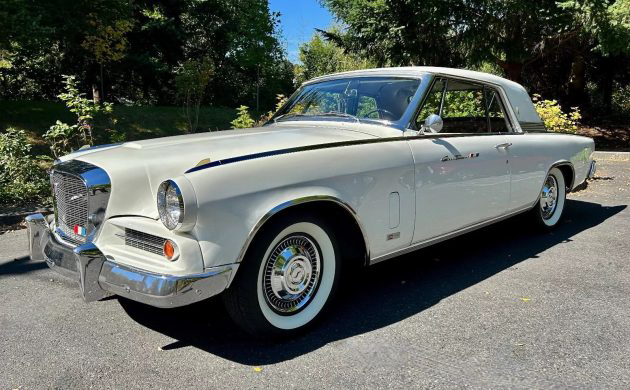

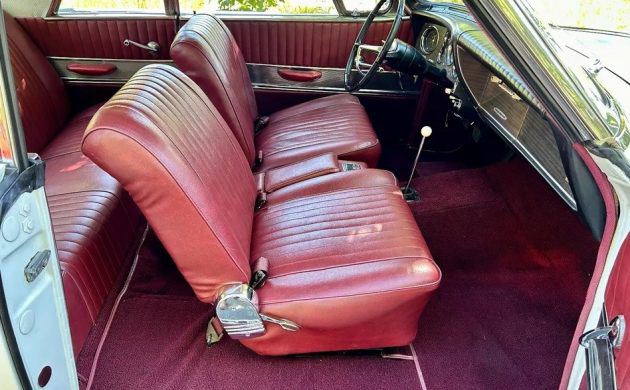
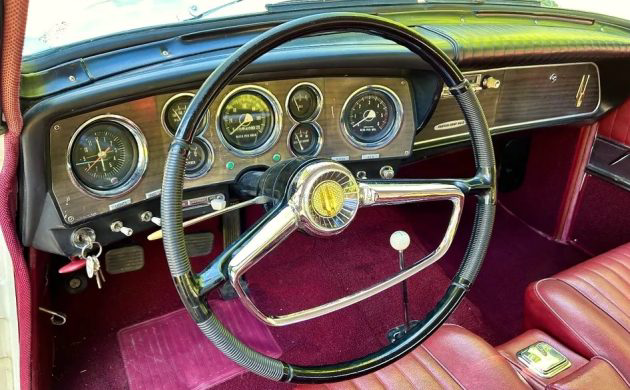
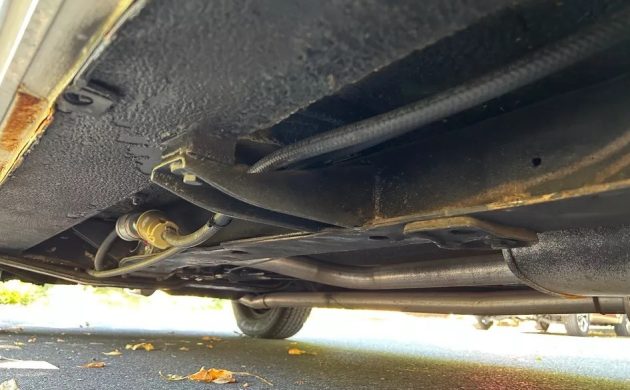
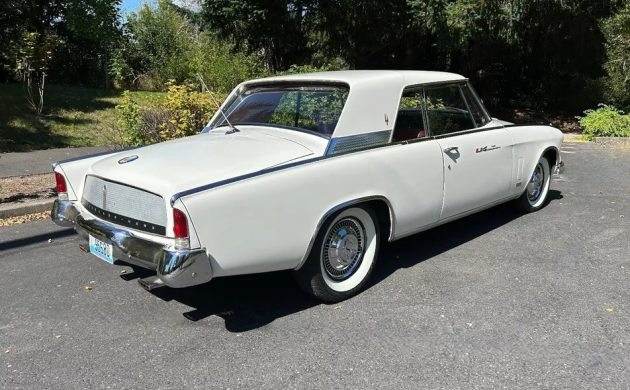


Check out this Cool dude 😎 and a Fast Studebaker 🚀
https://youtu.be/rnq7uJcgJug?si=ol-GZunPpVJZrvYN
I gotta say Studebaker really kept up appearances. this platform served them well from the ’53 coupes, then the Hawks with the fins in the late 50’s to finally this one. I think these were really sharp looking cars and looked modern for 1963. BUT back then everybody new it was a 10 year old car, and buyers wanted new-new-new. Not even overhead pedals, by ’63 the Lark and even the Stude pickup had overhead pedals. The only American car I can think of still using this system was Jeep. I don’t see any power steering on this one and I doubt power brakes either. Back then the personal luxury was just getting started and competing with the T-Bird and Riviera was a big job. I would have picked the Studebaker, but I always liked the underdogs.
I’ve always liked these, and this one is in really nice condition. As geezerglide points out, no power steering and probably no power brakes, but this would still be a pleasant drive (brush up on your parallel parking skills) and you aren’t likely to see another one at cars and coffee.
R3 pistons would lower compression than stock since they were designed for supercharger boost, and more boost than R2 engines had. Would be a HP loss, but might tolerate lower octane fuel better.
Aaron,
This is NICE! I bought a new ’63 Hawk (s/n 63V4868) in May of 1963. Same white over red with R-1 engine, P/S, A/T, R&H. You are correct the Studebaker brochure did not specify the power of the R-1 engine nor the torque. Back in the day, I had dealer service techs quote 240 bhp and 250 bhp, take your pick. While the displacement is the same as the Ford 289, the Stude 289 is a much heavier mill. Despite all that weight on the front end, the Hawk had good handling characteristics for that era but, as Road and Track said in their Hawk road test, “don’t try to closely follow a well driven Giulietta into a decreasing radius turn”. BTW, my Hawk ate a steady diet of mufflers. When the factory warranty expired, I found a muffler shop (a national chain) that offered a lifetime warranty. A few more Hawks in the neighborhood could have put that shop out of business.
The only thing i would change on this car is to replicate the auxiliary light set-up I had on my Hawk. I fitted a pair of Lucas SLR576/SFT576 long range and fog lamps on the front bumper guards close to the “radiator shell” grill. The toggle switches for the lights were placed in a stainless steel insert that replaced the ashtray in the console. The lights were great for late night road trips on two lane twistys and added to the European look of the front end.
FWIW, the Hawk’s Borg Warner A/T would normally start out in 2nd gear, not a problem with plenty of torque on hand. If you were in a hurry from a standing start, just quickly mash the accelerator to the floor for a 1st gear start. This is best done with a sandbag or two in the trunk or you will light up the rear tires.
I passed the Hawk on to a family member when I bought my second Alfa two years later. The Hawk stayed in the family for nine years before being sold to a Studebaker fanboy. I wish I had the garage space for the seller’s car.
With all the moaning about a worn out platform – Chevy built the square boddie trucks from 1973 until 1986 with the Suburban lasting a few more years. Ford also used a “platform” for some time just putting new bodies on it.
This is a nice one – nice to see the factory R-1 gas line and fuel filter going to the carb. Like was posted in the ad less than 400 were made with the R-1 motor and add the 4 speed and that’s one rare puppy. That dash was all business much like the first Speedster they built from 1955.